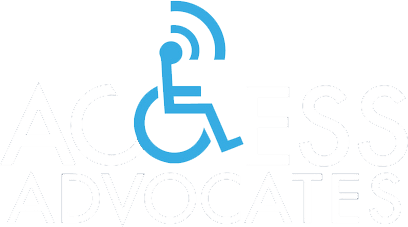The philosophical foundation of the Americans With Disabilities Act (ADA) is based on fundamental consideration for people with disabilities. Business owners and managers who use ADA guidance will know that they no longer unintentionally exclude a full 18 percent of our population from everyday activities. So, it’s all about removing barriers to access as well as promoting awareness that passive non-compliance is not acceptable.
In previous blogs, we have presented mildly challenging multiple-choice questions on ADA rules. In that vein, below is a more difficult test of your knowledge of ADA requirements on removing of architectural barriers to access:
1. The ADA requires that businesses remove disabled access barriers in existing buildings. Businesses must also make sure that newly built or altered buildings are accessible to individuals with disabilities. However, “grandfather provisions” often found in local building codes:
a. apply when they conflict with ADA regulations.
b. can be exempted on a case-by-case basis if most provisions are met.
c. do not exempt businesses from the obligations under the ADA.
d. apply when they are the same as ADA regulations.
2. Unfortunately, people with disabilities still face architectural barriers that impede their access to goods and services. Which of the following are common examples of architectural barriers:
a. a parking space with no access aisle to allow deployment of a van’s wheelchair lift
b. steps at a facility’s entrance or within its serving or selling space
c. aisles too narrow to accommodate mobility devices
d. all of the above
3. If a business facility was built or renovated during the past 20 years and complied with the 1991 ADA standards,
a. the business does not need to make any changes to comply with the newer 2010 standards.
b. the business does not need to make any changes to comply with the newer 2010 standards unless the new standards are different.
c. the business must fully comply with the new 2010 standards.
d. the business needs to apply for accessibility exemptions on a case-by-case basis.
4. A business decides to repaint its parking lot stripes. The original parking lot was in compliance with the 1991 ADA standards. The new striping
a. only has to comply with the 1991 ADA standards.
b. can be repainted to either standard.
c. must always comply with the 1991 ADA standards.
d. must meet the new 2010 ratio of van-accessible spaces.
5. ADA rules are that small businesses must remove barriers to disabled access when it is “readily achievable to do so.” Readily achievable means:
a. easily accomplished, regardless of the expense.
b. easily accomplished, but with mild difficulty.
c. easily accomplished without much difficulty or expense.
d. accomplished with mild expense.
Answer key:
1-c: Even if local building codes don’t include ADA disabled access, new buildings must fully comply. It’s the law.
2-d: Yes, all three are common examples of architectural barriers to disabled access. (This one was easy!)
3- a: If the facility was built or altered in compliance with the 1991 Standards, or it removed disabled access barriers, no further modifications are needed.
4-d: The rule is that if a business chooses to change anything that was in compliance with the 1991 Standards, what it changes is no longer exempt and must comply with the 2010 ADA Standard.
5-c: Additionally, the size and resources of a business are taken into account here. Businesses with greater resources must remove more barriers than businesses with fewer resources.
We can help!
Not sure whether your local merchants are doing everything they must to include disabled access? Contact us. Together we can advocate to tear down those barriers to disabled access.

